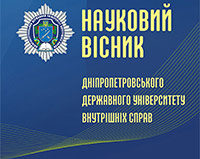Arif GULIEV, Maria ROZOVA
GULIEV A., ROZOVA M. (2023), IMAGE OF HURREM SULTAN IN LEGAL NOTES; Scientific Bulletin of Dnipropetrovsk State University of Internal Affairs, № 2, 59-63
DOI: 10.31733/2078-3566-2023-2-59-63
ABSTRACT. The article deals with the analysis of the image of Hürrem Sultan in legal monuments and its further influence on state-legal relations. The Ottoman Empire was the most powerful state in the military aspect, a country with an effective structure of state administration and a judicial system based on the postulates of Islam, but at the same time, in the above-mentioned period, the government declared a policy of religious tolerance, which existed not only de facto, but also de jure. In particular, historical leaders had a powerful influence on the formation of trends in world art.
The authors note that Roksolana’s name has been actively used in popular culture over the past decades. In particular, in Ukraine and Turkey, musical ensembles, restaurants and cafes, shops and hotels call Roksolana or Khyurrem, her personality inspires not only Ukrainian, but also foreign artists. Regarding Roksolana’s lifetime portraits, we note that they are the most reliable and valuable, because thanks to the works of the classical period, we have a better idea of Haseki’s appearance and figure. However, portraits of Haseki painted in the era of modern and modern art are also an integral part of our study, because they represent the image of Hürrem and encourage both the viewer and the artist to analyze the figure of Haseki from a new, previously unseen perspective.
The practical value of the research is determined by the fact that its materials can be used for the preparation of term papers, theoretical and practical courses in cultural studies. The research results are a prerequisite for writing master’s, diploma and course theses. The theoretical significance and value of the study lies in the fact that its results and conclusions diversify the vectors of scientific studies covering art inspired by historical figures of the Ottoman Caliphate.
Keywords: Middle East, art, sultanate, politics, leadership, Ottoman Empire, meritocracy, women’s sultanate.
- References:
- Inalcik, H. State, Sovereignty and Law During the Reign of Süleymân, pp. 70-72. URL: https://www.degruyter.com/document/doi/10.31826/9781463231774-006/html.
- Inaldzhyk, H. (1998) Osmansʹka imperiya: Klasychna doba (1300-1600) [The Ottoman Empire: The Classical Age (1300-1600)]. Kyiv : Krytyka, 287 p. [in Ukr.].
- The Ottomans: A Cultural Legacy, Thames & Hudson, 2022, p.36 48.Necipoğlu, Gülru (2005).
- The Age of Sinan: Architectural Culture in the Ottoman Empire. London: Reaktion Books, 268 p.
- Learning Arabic: The Fundamental Role Arabic Plays in the Muslim World. URL: https://www.superprof.co.uk/blog/the-importance-of-quranic-arabic-in
ism/#:~:text=Arabic%20was%20chosen%20by%20Allah,prayer%20and%20readi ng%20the%20Quran. - Inside the Ottoman Sultan’s Harem – Topkapı Palace – Istanbul (Turkey). URL: https://www.youtube.com/watch?v=QCjmKKgTUdY.
- Suley̆ man. Sultan Vostoka – Harolʹd Lémb, s. 32. URL: https://books lib.com/books/istoricheskaya-proza/page-32-35634-garold-le mb-suleiman-sultan-vostoka.html.
- Khyurrem. Znamenitaya vozlyublennaya sultana Suley̆ mana – Benua Sofʹya [Hürrem. The famous beloved of Sultan Suleiman is Benoit Sophi]. URL: https://biography.wikireading.ru/78196. [in russ.].
- Velychni sultany-ukraïnky Roksolana ta Khatidzhe Turkhan – Oleksandra Shutko [Majestic Ukrainian sultans Roksolana and Khatija Turkhan – Oleksandra Shutko]. URL: https://www.youtube.com/watch?v=-H3ybkKFSfE. [in Ukr.].
- A portrait of Roxelana (Haseki Hurrem Sultan, 1506-58), follower of Titian, Italy, Venetian School, 16th century [Elektronnyy̆ resurs]: URL: https://www.sothebys.com/en/buy/auction/2022/arts-of the-islamic-world-india-including-fine-rugs-and-carpets-2/a-portrait-of-roxelana-haseki-hurrem- sultan 1506.
- A portrait of Caterina Cornaro as Saint Catherine of Alexandria. URL: https://www.christies.com/en/lot/lot-6133233.
- A portrait of Roxelana (Haseki Hurrem Sultan, 1506-58), by a follower of Titian, Northern Europe, late 16th/early 17th century. URL: https://www.sothebys.com/en/buy/auction/2021/arts-of-the islamic-world-india-including-fine-rugs-and-carpets-2/a-portrait-of-roxelana-haseki-hurrem- sultan-1506.
- Cameria, or Mihrimah Sultan, daughter of Suleyman the Magnificent. URL: https://www.sothebys.com/en/buy/auction/2020/arts-of-the-islamic-world-india-including-fine-rugs carpets/cameria-or-mihrimah-sultan-1522-1578-dau ghter-of.
- Fiholʹ, M. P. (1997) Mystetstvo Ukraïny [Art of Ukraine] : biohrafichnyy̆ dovidnyk / uporyad.: A. V. Kudrytsʹkyy̆ , M. H. Labinsʹkyy̆ ; za red. A. V. Kudrytsʹkoho. Kyiv : «Ukraïnsʹka entsyklopediya» im. M. P. Bazhana, p. 605. [in Ukr.].
